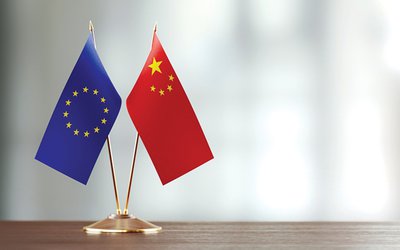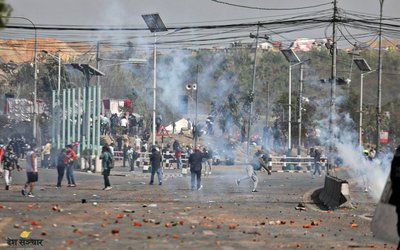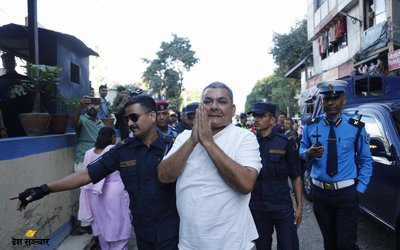More on International




FOR 250 years Nepal’s national unity has traded on a definition of the culture of high-caste Hindus from the hilly regions as the national culture. The typical costumes of the priestly Brahmins and lordly Chhetris, their language and religion, their customs and their caste system, all were held up by the state as a synonym for “Nepaliness”.
Many of Nepal’s ethnic groups have long felt excluded, their own Nepaliness questioned. But many of the so-called minorities (in fact, collectively, a majority) have struggled for twenty years to define themselves as “indigenous”, and thereby to claim “prior rights” to natural resources. Now the Brahmins and Chhetris are finding the tables turned. As the “minorities” agenda has gained momentum, the high-caste people of the hills, whose ancestors migrated to what is now Nepal many centuries or even millennia ago, feel threatened.
This week politicians were due to fulfil a commitment to divide Nepal into ethnic federal states, under a new constitution. This made many Nepalis anxious, as they feared that their country was on the brink of falling apart. The pressure mounted until, amid alleged conspiracies, strikes and street protests threatening to boil over into something worse, the long delayed charter was postponed for another three months.
Is it really a good idea, dividing a country of around 30m people and over 100 different ethnic, caste and linguistic groups into ten or more federal states, each with a designated ethnic identity? Sceptics argue that ethnic federalism makes a poor fit for the country’s social complexity. Opponents predict it will sow communal divisions and aggravate a spiral of hatred and violence where peaceful co-existence was once the norm. None of this, they say, was an issue until the Maoists messed up everything.
Caste discrimination has not had been embodied in the law of Nepal for 50 years and yet, despite assurances of equality that were written into previous constitutions, very little has been done to address entrenched inequalities. The high castes still overwhelmingly dominate national politics as well as the army, bureaucracy, media and business communities. Nepal is one of the most economically unequal countries in Asia and ethnicity and caste status are closely correlated with a person’s likely fortunes. Many if not most citizens consider themselves “excluded” by the state.
In India, the world’s only other national society to recognise caste, there is a long history of legislation aimed at levelling the playing field, such as quotas and laws that criminalise discrimination. Moreover, most of the federal states are formed around particular languages. Nepal has hardly got started in that direction. An Inclusion Bill, supposed to introduce Indian-style quotas to the public sector, is currently stalling, apparently blocked by the Brahmin-dominated bureaucracy. Many privileged Nepalis, including many of those who worry about “communal harmony”, seem to have little interest in the grievances of excluded groups. Instead patriotic flag-waving is the order of the day (such as the crowd pictured above, gathered in a demonstration of “harmony”).
Ethnic political demands, such as for recognition of the “minority” cultures, have been raised at least since 1990, when the previous constitution was drafted. They have also been repeatedly overlooked and frustrated. Over time the demands became more extreme, until activists settled upon the idea that a system of ethnic federalism would be the best way to escape the grip of the dominant groups. This demand has gained traction: the interim constitution contains a commitment to federalism and two of the official committees mandated to design the system have proposed ethnicity-delimited states.
To many members of Nepal’s excluded communities, then, calls from high-caste politicians to show patience, to postpone the issue until tempers have cooled, or to preserve “communal harmony”, sound like self-serving attempts to defend the status quo.
The current Constituent Assembly (CA), elected four years ago under a system of proportional representation, is broadly representative of Nepal’s population. And yet, after delaying the contentious decisions on federalism to the last moment, a group of (high-caste) party leaders tried to drop the ethnic element and push a privately negotiated constitution through the CA on a single yes-or-no vote. A rebellion by the majority of CA members and angry street protests by the ethnic groups forced them to back down. Even if it were desirable, it is now clearly too late to put the ethnic genie back in the bottle.
While debate has raged over the number of federal states and their possible names there has been almost no public attention devoted to the powers states will have, such as raising revenue, nor to their relationship to central government or the rights of their citizens. Even political scientists say they find the work of the CA hard to follow.
In fact, largely unnoticed by the public, ethnic demands for “prior rights” have been quietly dropped. It seems all but certain that all citizens, in every state, will have the same rights; that the states will have weak powers in relation to the centre; and that a proportional electoral system will prevent any group from dominating the others. The current proposals amount to little more than naming states after the larger of the minority ethnic groups and drawing their borders to give their populations a slender electoral boost in state politics. Ethnic leaders, national politicians and the media have all failed to explain what ethnic federalism will mean, allowing the hopes and anxieties of the various constituencies free rein. Leaving it all to the last moment has had the effect of stoking a febrile atmosphere.
If the extra three months that the leaders have granted themselves are partly used to explain what’s going on, the growing ethnic polarisation might at least be mitigated. Sadly, that is not necessarily a likely scenario.
Instead the usual wrangling to replace the prime minister has already resumed. Ethnic leaders must contend with an increasingly radicalised base. Meanwhile the two oldest parties, the Nepali Congress and the Unified Marxist-Leninists, have set their faces against ethnic federalism, even at the risk of losing many of their remaining minority voters and MPs. If their only strategy is now to guard high-caste privileges, then Nepal’s vaunted communal harmony could indeed be in trouble.
http://www.economist.com/blogs/banyan/2012/05/nepals-minorities






